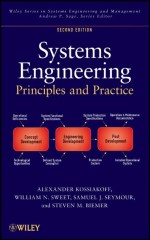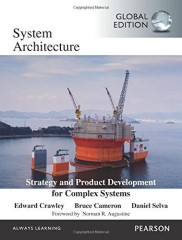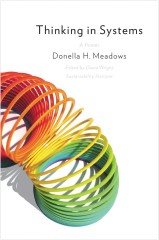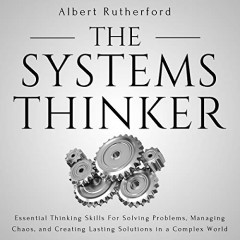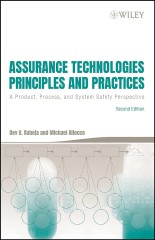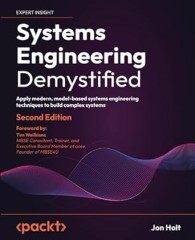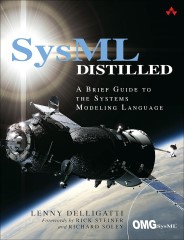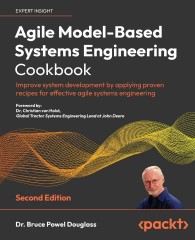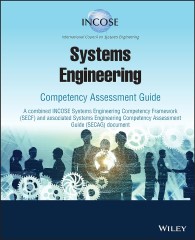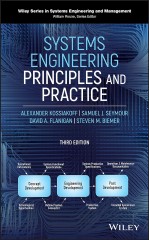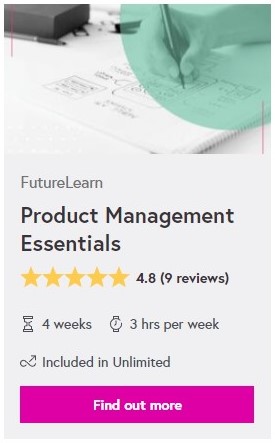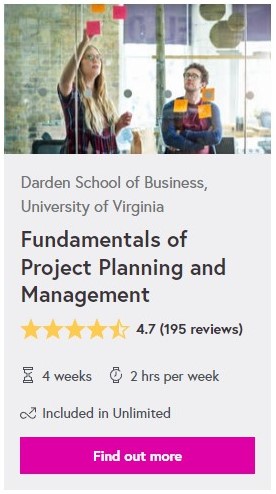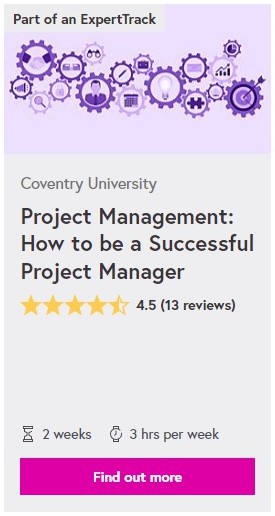A missing comma in a requirements document cost an aerospace company $1.2 million. A misinterpreted specification led to the loss of NASA’s Mars Climate Orbiter. These aren’t isolated incidents – they represent a persistent challenge in systems engineering. Despite decades of methodologies and tools, requirements definition remains a critical point of failure in projects worldwide.
Table of Contents
- 1. The Requirements Gathering Process: From Stakeholders to Specifications
- Starting with Stakeholder Analysis
- Elicitation: The Art of Drawing Out Requirements
- Documentation That Drives Understanding
- Validation: Beyond Checking Boxes
- Real-time Refinement and Feedback
- Managing Conflicts and Trade-offs
- Tools and Technology: Enabling Better Processes
- The Role of Prototypes and Models
- 2. Writing Effective Requirements: The Language of Success
- 3. Requirements Management: Keeping Control as Projects Evolve
- 4. Advanced Topics: Where Theory Meets Modern Practice
- MBRE vs MBSE: Understanding the Distinction
- 5. Future Trends: The Evolution of Requirements Engineering
Why Another Guide on Requirements?
The statistics tell a compelling story: 68% of project failures trace back to poor requirements, yet only 16% of requirements documents meet industry quality standards. Traditional approaches clearly aren’t working. This guide offers something different – practical, battle-tested strategies that bridge the gap between theory and real-world application.
Who Should Read This
Whether you’re a new engineer facing your first specification document or a seasoned professional dealing with complex stakeholder needs, this guide provides actionable insights:
For Newcomers:
- Essential foundations without the theoretical overflow
- Common pitfalls and practical solutions
- Ready-to-use templates and guidelines
For Experienced Engineers:
- Advanced techniques for complex systems
- Strategies for conflicting requirements
- Modern approaches to agile environments
What to Expect
We’ll challenge conventional wisdom and explore:
- Why “complete and unambiguous” requirements often fail
- How to manage requirements in rapidly changing projects
- When to adapt or break traditional rules
- Practical tools for requirements success
This isn’t another theoretical treatise. It’s a practical guide based on real experiences, costly mistakes, and proven solutions. Through case studies and examples, you’ll learn how to turn requirements from a documentation exercise into a powerful engineering tool.
Ready to rethink your approach to requirements definition? Let’s begin.
1. The Requirements Gathering Process: From Stakeholders to Specifications
The journey from stakeholder needs to clear, actionable requirements is often where projects first go astray. Success depends not on following a rigid process, but on understanding how to effectively extract, capture, and validate requirements through systematic engagement with stakeholders.
Starting with Stakeholder Analysis
Begin by casting a wide net. Too often, projects fail because key stakeholders are identified too late. A medical device project recently discovered maintenance staff requirements months into development – an oversight that led to significant rework. Map out your stakeholder landscape early, including not just end users and customers, but also maintenance personnel, regulatory bodies, and internal teams.
When identifying stakeholders, think beyond the obvious. For a railway signaling system, the primary stakeholders included train operators and maintenance crews. However, it was input from cleaning staff that revealed critical access requirements that would have been expensive to retrofit later.
Recommended Further Reading Amazon BooksElicitation: The Art of Drawing Out Requirements
Successful elicitation is more art than science. Different stakeholders require different approaches, and knowing which method to use in each situation can dramatically improve your results. The most effective requirements engineers select their elicitation methods based on stakeholder type and project context.
| Method | Best For | When to Use | Key Benefit |
|---|---|---|---|
| Structured Workshops | Technical teams and complex system interactions | Early project stages with multiple stakeholders | Generates collaborative insights and reveals dependencies |
| Contextual Observation | End users and operational staff | Understanding existing processes and pain points | Reveals unspoken requirements and actual usage patterns |
| One-on-One Interviews | Senior stakeholders and subject matter experts | Detailed technical or domain-specific requirements | Allows deep dive into specific areas of expertise |
| Scenario Analysis | Cross-functional teams and system integrators | Validating requirement completeness | Identifies gaps and edge cases in requirements |
Consider how one aerospace company improved their requirements gathering by combining these methods. Rather than relying solely on traditional interviews, they observed pilots in simulators, analyzed incident reports, and conducted scenario-based workshops. This multi-faceted approach revealed requirements that stakeholders hadn’t thought to articulate.
Documentation That Drives Understanding
Documentation isn’t about filling templates – it’s about creating a shared understanding. Modern requirements documentation should tell a story. Start with the business context, flow through user needs, and arrive at specific requirements. Each requirement should be traceable back to specific stakeholder needs and business objectives.
A successful enterprise software project used user stories to bridge the gap between stakeholder needs and technical requirements. Each requirement was linked to specific scenarios, making it easier for both business and technical teams to validate their understanding.
Validation: Beyond Checking Boxes
Validation is your first line of defense against requirement errors. Effective validation goes beyond asking stakeholders “Is this what you meant?” Use prototypes, simulations, and scenarios to test understanding. One automotive company reduced requirement-related changes by 40% by using driving simulators to validate requirements with stakeholders early in the process.
Real-time Refinement and Feedback
Requirements gathering isn’t a one-time activity. Create feedback loops that allow for continuous refinement. Set up regular review cycles with stakeholders, but be prepared to adapt when new information emerges. A defense contractor saved millions by establishing weekly stakeholder reviews during the requirements phase, catching misunderstandings before they became expensive changes.
Managing Conflicts and Trade-offs
Conflicting requirements are inevitable. The key is having a systematic approach to resolution. When a telecommunications project faced conflicts between performance and cost requirements, they used a value-based approach. Each requirement was weighted against business objectives, allowing for informed trade-off decisions.
Tools and Technology: Enabling Better Processes
While tools shouldn’t drive your process, the right tools can significantly improve efficiency. Modern requirements management tools offer benefits beyond simple documentation. They can help visualize requirement relationships, track changes, and maintain traceability. However, choose tools that support your process rather than forcing you to adapt to them.
The Role of Prototypes and Models
Early visualization of requirements reduces misunderstandings. Use prototypes, models, or simulations where appropriate. A medical device manufacturer used 3D-printed prototypes during requirements gathering, leading to the early identification of ergonomic requirements that would have been missed in document reviews alone.
Close collaboration with stakeholders throughout the requirements gathering process is crucial. Remember, the goal isn’t to simply collect requirements – it’s to build a shared understanding that will guide successful system development. In the next section, we’ll explore how to transform this understanding into well-written requirements that drive effective system development.
Recommended Further Reading Amazon Books2. Writing Effective Requirements: The Language of Success
Writing requirements is like crafting a legal contract between stakeholders and developers. Each word matters, and ambiguity can lead to costly mistakes. Let’s explore how to write requirements that drive successful system development.
The Power of Precise Language
A requirement’s effectiveness hinges on its clarity. Consider these two requirements for a medical device:
Poor: “The device should respond quickly to user input.”
Better: “The device must respond to user button presses within 100 milliseconds under normal operating conditions.”
The difference? The second requirement is testable, measurable, and leaves no room for interpretation. Let’s break down the elements that make it effective.
Active Voice and Action-Oriented Statements
Requirements should clearly state who or what is performing an action. Compare these approaches:
Weak: “Data logging will be performed.”
Strong: “The system shall log all user transactions in the secure database.”
The strong version identifies the actor (the system), the action (logging), and the specific context (user transactions in the secure database). This clarity becomes crucial during development and testing phases.
Modal Verbs: Shall, Will, Must, Should
The language of requirements demands precision in obligation. Here’s the industry-standard hierarchy:
| Modal Verb | Use When | Example |
|---|---|---|
| Shall | Mandatory requirement | The system shall maintain user data encryption at rest |
| Will | Statement of fact/design intent | The database will support MySQL 8.0 |
| Must | External constraint | The device must comply with FDA regulation 21 CFR Part 11 |
| Should | Design goals/preferences | Response times should not exceed 2 seconds |
Quantifying Performance
Effective requirements quantify performance wherever possible. For a railway signaling system:
Vague: “The system shall process signals rapidly.”
Specific: “The system shall process signal state changes within 50 milliseconds of detection, for up to 1000 concurrent signals.”
The specific version provides measurable criteria that can be tested and verified. It leaves no room for misinterpretation between stakeholders and developers.
Conditions and Constraints
Well-written requirements include necessary conditions and constraints. Consider an aircraft system:
“The landing gear shall deploy within 15 seconds when:
- Aircraft altitude is below 10,000 feet
- Airspeed is less than 250 knots
- Hydraulic pressure exceeds 2000 psi”
This requirement clearly states both the primary function and its operational constraints.
Requirements Patterns
Use consistent patterns to maintain clarity across your requirements document. A proven pattern is:
[System Element] + [Shall/Will/Must] + [Action] + [Object] + [Performance Criteria] + [Conditions]
Example: “The authentication module shall validate user credentials within 1 second when system load is under 80% capacity.”
Avoiding Common Pitfalls
Learn from the expensive mistakes of others. Avoid:
- Compound requirements: Split “The system shall be fast and user-friendly” into separate, measurable requirements
- Subjective terms: Replace “user-friendly” with specific, measurable criteria
- Design solutions: Focus on what is needed, not how to achieve it
- Ambiguous terms: Eliminate “etc.”, “and/or”, “as appropriate”
Requirements in Context
Requirements don’t exist in isolation. Each should trace to higher-level needs and lower-level specifications. For example:
Business Need: “Increase customer satisfaction”
↓
System Requirement: “The web interface shall load customer data within 2 seconds”
↓
Technical Specification: “Database queries shall be optimized for response times under 500ms”
Validation Through Reviews
Before finalizing any requirement, ask:
- Can this be tested?
- Is it technically feasible?
- Does it conflict with other requirements?
- Would different readers interpret it the same way?
- Does it specify what, not how?
Examples That Work
Let’s close with a series of before-and-after examples from real projects:
Before: “The system should handle multiple users.”
After: “The system shall support concurrent access by up to 10,000 authenticated users while maintaining response times under 3 seconds for 95% of requests.”
Before: “Updates must be regular.”
After: “The system shall perform database backups every 6 hours, with each backup completing within 30 minutes during normal operation.”
Remember, effective requirements writing is a skill developed through practice and refinement. In the next section, we’ll explore how to manage these requirements throughout the project lifecycle.
Recommended Future Learn Short Courses3. Requirements Management: Keeping Control as Projects Evolve
Managing requirements isn’t just about storing documents – it’s about maintaining control over your project’s evolution while staying responsive to change. Let’s explore how successful organizations handle this challenge.
Establishing Traceability
Traceability is your project’s safety net. When a critical customer need changes, how quickly can you identify all affected requirements? A major defense contractor saved millions by establishing a traceability matrix that linked customer needs to specific technical requirements. When requirements changed, they could rapidly assess the impact and adjust their development plans.
| Traceability Level | Links To | Purpose |
|---|---|---|
| Upward | Business Needs | Validates requirement purpose |
| Horizontal | Related Requirements | Identifies dependencies |
| Downward | Design Elements | Shows implementation impact |
Change Management That Works
Change is inevitable. The key is managing it effectively. A successful medical device manufacturer uses a three-step approach for every proposed change:
First, assess the impact. Use traceability links to identify all affected requirements and components. Document potential risks and dependencies.
Second, evaluate the cost. Consider not just development time, but testing, validation, and potential regulatory implications.
Third, make an informed decision. Involve key stakeholders and document the rationale for accepting or rejecting the change.
Version Control: Beyond Basic Documentation
Modern requirements management demands more than simple document versioning. Each requirement needs its own version history, showing how it evolved and why. For example, an automotive supplier tracks requirement changes against specific market feedback, making it easier to understand and justify historical decisions.
Managing Requirements in Living Systems
Today’s systems continue to evolve after deployment. Cloud-based services, regular updates, and changing regulations mean requirements management extends throughout the system’s lifetime. Consider how a financial services platform handles this:
Their requirements database distinguishes between:
- Core requirements (fundamental system needs)
- Evolving requirements (expected to change)
- Compliance requirements (regulatory driven)
This categorization helps them prioritize changes and maintain system stability while staying adaptable.
Impact Analysis: Looking Before You Leap
Before implementing changes, successful teams conduct thorough impact analysis. A telecommunications company uses a simple but effective approach:
- Review upstream impacts: Will this change affect our ability to meet customer needs?
- Assess horizontal impacts: What other requirements or systems might be affected?
- Evaluate downstream impacts: How will this affect existing designs and implementations?
- Consider timeline impacts: How will this change affect our delivery schedule?
Tools and Automation
While tools shouldn’t drive your process, the right ones can significantly improve efficiency. Modern requirements management tools offer:
- Built-in traceability
- Automated impact analysis
- Change history tracking
- Stakeholder notification
- Requirement validation
Choose tools that support your process rather than forcing you to adapt to them. One aerospace company improved efficiency by 30% by selecting a tool that matched their existing workflows rather than forcing a new process.
Configuration Control: Maintaining Order
Configuration control ensures everyone works from the same baseline. Establish clear procedures for:
- Who can propose changes
- How changes are reviewed
- When changes are implemented
- How stakeholders are notified
- Where changes are documented
Real-World Application
A large transportation project demonstrates these principles in action. When new safety regulations emerged mid-project, their robust requirements management process allowed them to:
- Quickly identify affected requirements
- Assess the impact on existing designs
- Propose and evaluate changes
- Implement updates with minimal disruption
- Maintain compliance documentation
Future-Proofing Your Process
Requirements management must evolve with technology. Consider incorporating:
- Automated requirement validation
- AI-assisted impact analysis
- Real-time collaboration tools
- Automated compliance checking
Remember: effective requirements management isn’t about restricting change – it’s about managing it effectively to ensure project success.
In the next section, we’ll explore advanced topics in requirements engineering, including model-based approaches and agile methodologies.

4. Advanced Topics: Where Theory Meets Modern Practice
The landscape of requirements engineering continues to evolve with new methodologies and technologies. Let’s explore how leading organizations are pushing the boundaries of traditional approaches to meet modern challenges.
Model-Based Requirements Engineering
Traditional text-based requirements are showing their limitations in complex systems. Model-based requirements engineering (MBRE) offers a powerful alternative. A major aircraft manufacturer recently shifted to MBRE for their next-generation avionics system, resulting in a 40% reduction in requirement-related defects.
Consider this comparison:
| Aspect | Traditional Approach | Model-Based Approach |
|---|---|---|
| Visualization | Text descriptions | Interactive models |
| Validation | Manual review | Automated checking |
| Integration | Document links | Direct model connections |
| Analysis | Manual impact assessment | Automated impact analysis |
MBRE vs MBSE: Understanding the Distinction
Model-Based Requirements Engineering (MBRE) focuses specifically on using models to define, analyze, and validate requirements. It’s about capturing the “what” of a system – what the system needs to do, what constraints it must meet, and what stakeholders expect from it.
Model-Based Systems Engineering (MBSE), on the other hand, is a broader approach that encompasses the entire systems engineering process. It includes not just requirements, but also design, analysis, verification, and validation. MBSE addresses both the “what” and “how” of system development.
| Aspect | MBRE | MBSE |
|---|---|---|
| Scope | Requirements only | Complete system lifecycle |
| Focus | Capturing needs and constraints | System design and implementation |
| Timeframe | Early lifecycle | Entire lifecycle |
| Models Used | Requirements models, use cases | System architecture, behavior, requirements, and more |
| Primary Users | Requirements engineers, stakeholders | Systems engineers, all engineering disciplines |
| Deliverables | Requirements specifications, validation results | Complete system design, verification evidence |
Think of MBRE as a subset of MBSE – it’s one important piece of the larger systems engineering puzzle. While MBRE helps ensure we’re building the right thing, MBSE helps ensure we’re building the thing right, from start to finish.
Both approaches share common tools and languages, like SysML, but use them for different purposes and at different scales. Understanding this relationship helps organizations choose the right approach for their needs while maintaining consistency across their development process.
Agile Requirements Management
The tension between agile methodologies and formal requirements engineering is resolving into hybrid approaches that maintain rigor while embracing flexibility. A medical device company successfully combines:
- Traditional requirements for regulatory and safety-critical features
- User stories for interface and usability features
- Iterative refinement for performance requirements
Their approach demonstrates that agile and formal methods can coexist when thoughtfully integrated.
Requirements in Safety-Critical Systems
Safety-critical systems demand exceptional precision in requirements engineering. Modern approaches combine traditional safety analysis with new techniques:
Formal Methods: Mathematical verification of requirements consistency
Automated Hazard Analysis: AI-assisted identification of potential safety issues
Runtime Verification: Continuous monitoring of safety requirements
A recent automotive safety system project demonstrated how these approaches work together. Safety requirements were formally verified during design, automatically checked during development, and continuously monitored in operation.
AI and Automation in Requirements Engineering
Artificial Intelligence is transforming how we handle requirements. Leading organizations are using AI to:
- Analyze requirement quality and consistency
- Predict potential conflicts and issues
- Suggest improvements in requirement wording
- Automate traceability analysis
- Generate test cases from requirements
One defense contractor reduced requirement review time by 60% using AI-assisted analysis tools while improving requirement quality.
Domain-Specific Requirements Languages
Generic requirement specifications often fall short for specialized domains. Domain-Specific Requirements Languages (DSRLs) are emerging as a powerful solution. For example:
Automotive companies use DSRLs for precise specification of control systems
Financial institutions employ DSRLs for regulatory compliance requirements
Healthcare organizations utilize DSRLs for clinical system requirements
Requirements in Distributed Systems
Modern distributed systems present unique challenges for requirements engineering. A major cloud service provider addresses these through:
- Microservice-specific requirements frameworks
- Cross-service dependency mapping
- Runtime requirement monitoring
- Automated compliance checking
Their approach ensures consistency across distributed components while maintaining system flexibility.
Sustainability Requirements
Environmental concerns are driving new approaches to requirements engineering. Organizations now must consider:
- Energy efficiency requirements
- Resource utilization specifications
- Environmental impact metrics
- Lifecycle sustainability factors
A recent data center project demonstrated how sustainability requirements can be integrated with traditional performance and reliability specifications.
Cultural and Global Considerations
As systems become more global, requirements engineering must adapt to cultural differences. A successful enterprise software project incorporated:
- Culturally-specific user experience requirements
- Multi-language support specifications
- Regional compliance requirements
- Local privacy standards
Integration with DevOps
Modern DevOps practices are changing how we handle requirements. Successful organizations are:
- Embedding requirements in CI/CD pipelines
- Automating requirement validation
- Maintaining living requirement documentation
- Integrating requirement monitoring
5. Future Trends: The Evolution of Requirements Engineering
The practice of requirements engineering stands at a turning point. As systems become more complex and interconnected, traditional approaches are evolving to meet new challenges. Let’s explore where the field is heading and how organizations can prepare for the future.
Emerging Methodologies
Requirements engineering is moving beyond traditional document-centric approaches. Leading organizations are pioneering new methodologies that reflect the complexity of modern systems.
Digital Twins for Requirements: Organizations are creating virtual models that simulate not just system behavior, but requirement interactions. An automotive manufacturer recently implemented digital twins to validate requirements in real-time, reducing validation time by 60%.
Continuous Requirements Engineering: The line between development and requirements is blurring. Modern approaches treat requirements as living artifacts that evolve throughout the system lifecycle. This shift acknowledges that requirements don’t stop at delivery – they continue to evolve with the system.
| Traditional Approach | Emerging Approach |
|---|---|
| Fixed requirements baseline | Continuous requirement evolution |
| Sequential validation | Real-time verification |
| Document-based tracking | Model-based simulation |
| Periodic updates | Continuous adaptation |
Tool Evolution
The next generation of requirements tools is emerging, powered by AI and advanced analytics.
Smart Requirements Assistants: These tools don’t just store requirements – they actively assist in writing them. Using natural language processing and machine learning, they suggest improvements, identify potential conflicts, and ensure consistency across large requirement sets.
Predictive Analytics: Future tools will anticipate requirement changes based on system behavior and user feedback. Early adopters report up to 40% improvement in requirement accuracy using predictive capabilities.
Cross-Platform Integration: Requirements tools are becoming central hubs that connect with development, testing, and operational monitoring systems. This integration provides unprecedented traceability and impact analysis capabilities.
Industry Direction
Different industries are driving requirements evolution in unique ways:
Aerospace and Defense: Pushing the boundaries of model-based requirements for complex systems integration. The focus is on maintaining rigorous validation while improving agility.
Healthcare: Leading the adoption of AI-assisted requirements validation, particularly for safety-critical systems. Regulatory compliance remains a key driver of innovation.
Software Development: Pioneering continuous requirements engineering approaches that blur the line between requirements and implementation.
Automotive: Developing new approaches for autonomous systems where requirements must adapt to learning systems.
Best Practice Development
As the field evolves, new best practices are emerging:
Adaptive Requirements Framework: Organizations are moving away from rigid requirements processes toward adaptive frameworks that can flex with project needs while maintaining necessary rigor.
Stakeholder Integration: Future practices emphasize continuous stakeholder engagement throughout the system lifecycle, not just during initial requirements gathering.
Sustainability Focus: Environmental and social impact considerations are becoming standard elements of requirements frameworks.
Data-Driven Decisions: Requirements decisions are increasingly based on operational data and user behavior analytics rather than just stakeholder input.
Looking Ahead: 2025 and Beyond
Several key trends will shape the future of requirements engineering:
- Quantum Systems Requirements: As quantum computing moves from research to reality, new approaches for specifying quantum system requirements will emerge.
- AI Governance: Requirements for AI systems will evolve to address ethical considerations and governance needs.
- Global Collaboration: Tools and methodologies will continue to adapt to support distributed teams and cross-cultural requirements development.
- Sustainability Integration: Environmental impact requirements will become standard elements of system specifications.
Preparing for the Future
Organizations can prepare for these changes by:
Building Flexibility: Develop processes that can adapt to new methodologies and tools without losing rigor.
Investing in Skills: Train teams in emerging technologies and approaches while maintaining core requirements engineering principles.
Monitoring Trends: Stay engaged with industry developments and be ready to adopt proven innovations.
Testing New Approaches: Pilot new methodologies and tools on suitable projects to gain experience and evaluate benefits.
The future of requirements engineering is both challenging and exciting. Success will come to organizations that maintain strong foundations while embracing innovation. As we move forward, the key will be balancing the need for rigorous requirements management with the flexibility demanded by modern system development.


